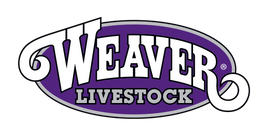
4 keys to slay your junior national speech delivery
Can you believe summer is flying by already? World Pork Expo just wrapped up last week and national junior heifer shows kick off this weekend! If you’re participating in a speaking contest this summer at a junior national event or your local county fair, we’ve got some tips on nailing the delivery. Good luck!
Plant your feet, unless it’s meaningful. Extra movement that doesn’t add anything to your message can be very distracting. You’re much better off to deliver your speech with fewer, meaningful movements rather than walk constantly throughout your delivery. So, set a “home base” that your feet adhere to when not intentionally moving. I’ve judged quite a few speaking contests for students, and I’d always prefer to see a student who plants their feet for periods of time rather than aimlessly walking throughout the entire speech. You’ll appear more confident and be able to make more effective hand gestures. Move as much as you want from the waist up, but think carefully about when and how you move your feet.
Talk to me, not at me. The judges of the contest should not be observers of your speech. They should be recipients of your message. Speak directly to them (and others) in the room (even if you’re looking at the tops of their heads). Whether a prepared or extemporaneous speech, think of your delivery as a conversation – where you’re the only one talking at the moment – and use that conversation mindset to guide your tone and movement.
Memorize your content by working in chunks. Mentally break your speech into chunks of 1-3 paragraphs. The opening is a chunk, the body is a few chunks, and the closing is a chunk. First, memorize the first line of each chunk and the order of those first lines. In your head, you should now have the first line of your opening, followed by the first lines of each of the body chunks, and then the first line of your closing chunk.
Next, memorize the entire closing chunk. This will give you something to look forward to as your speech moves along. You’ll feel very confident about the closing and you’ll be home free when you hit that first line of your closing. Now, memorize the entire opening chunk. First impressions count!
Then, you can work on memorizing the content of the body of your speech. Make sure you work on these in your chunks, rather than try to memorize the entire body at once.
Work on chunks EVERYWHERE. Talk through one particular chunk multiple times while you rinse your heifer, ride to practice, or eat breakfast. Work in chunks and, since you already memorized the first lines of each chunk and their order, you’ll be able to put the chunks together easily. Earlier this year I delivered a presentation in a contest format where it was very important, due to timing and rules much like your upcoming contest, that I deviate very little from the content I had written in advance. In the days and weeks leading up to the contest, I read through and talked through chunks while in the car, making dinner, or on a walk. Chunks make it manageable.
Channel your nerves. I’m sorry. I don’t have a magic formula for taking away that nervous feeling. I’m a 30-something professional and I still get a little nervous. Nerves are normal and you’re going to experience them. Accept that. But here’s the thing: they don’t have to control you. They don’t get to rattle you. They can’t conquer you. You can even have a little conversation with them before the contest. “OK, nerves, thanks for showing up for today’s contest. I’m glad you’re interested in this situation, but for today you’ll be sitting in the hallway while I shine. You don’t get to come to the front of the contest room with me. Got it?” Then channel those feelings into excitement and let that energy shine through you. You’ll be a rock star.
Marlene Eick is a storyteller and coach. As co-owner of Herdmark Media, she helps businesses in agriculture tell their story. As a leadership and career coach, she helps people discover the stories within themselves.








